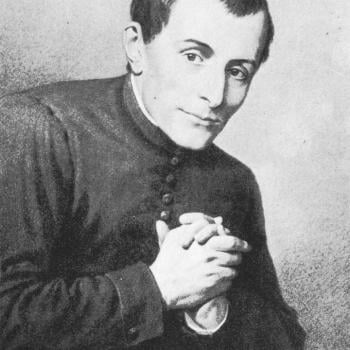Ronald Grimes, noted ritual theorist, has been one of the more formative voices in my own process of understanding ritual and how it relates to worshiping communities in their liturgy. Grimes has helped both widen the field of ritual, and has also contributed a very valuable set of parameters in which the rituals intricately woven into Liturgy can be consistently and comprehensively evaluated. Through his unique methodology he has been able to speak with depth and precision about ritual without falling into limiting it with rigid categories. I understand Grime’s methodology as a three-fold process of first recognizing ritual, then mapping the ritual field, finally Grimes proposes what I see as a third stage where one recognizes that often people fashion new rites that can respond to new situations in a given context through a process that he calls ritualizing.
- The first stage in studying liturgy as a ritual action is to look for which rituals are actually being done. One of the powerful things about Grimes is that he does not form a hard definition of “ritual” into which all things must find their place. On the contrary he compiles common traits of ritual that can help center a person around what a ritual is without limiting what can and can’t be included. For example many rituals are traditional. Grimes recognizes that encountering something that is traditional might be a good indicator that a ritual is going on, but it is possible for something to be personally invented (and therefore not traditional) but at the same time be a ritual. Alternatively, time some traditional things are not rituals. When using this to look at the liturgy as a ritual action it is important to avoid using rigid definitions to identify rituals but, instead, to view ritual as a category of things with a broad and fluid dynamic field. Rituals are often collective, meaningful, participatory, sacred, functions that negotiate a person’s humanity, but there are many examples of rituals that do not fit into one or more of these designations. No matter how one tries to define a ritual, Grimes wants to make sure that one includes room for something that doesn’t fit. As one, therefore, approaches the liturgy there must be a keen awareness that there may be rituals lurking in unexpected places. Widening what qualifies as a ritual can unveil hidden fruit for study.
- The second stage, of mapping the ritual field, is possibly the greatest tool Grimes has devised. He understands that in any endeavor to study ritual one brings with oneself a series of implicit questions that will be asked in the process. Grimes purposes that these implicit questions be made explicit in the process. In his own formulation of this he sets out six categories of questions that should be asked by people engaging in observing the rituals discoveries in stage one.
- The first category asks questions about ritual space. Questions in this category would include things like: Where is the setting? How clear are the boundaries? Is the space static? Who can get into the space? How big is the space? How is the space formed? What’s the background of the space?
- The second category deals with the objects of the ritual. It might ask questions like: What is being used and how many are there? Who owns the objects, and what’s their status? How is power at work in the objects?
- The third category asks questions about time. It is concerned with questions like: What time of day is it when the ritual happens? What time of year? What calendar is being used? How does the ritual relate to social time? How long does the ritual take?
- The fourth category asks questions about what is heard. This includes language and other sounds. It asks questions like: Does this ritual assume the people have a literacy? What kind of language is being used? What non-linguistic sounds are heard? What meaning do the sounds carry for people?
- The fifth category of questions that help the observer understand how the ritual helps define and transform identity. It asks questions like: What significance to the roles have? Are there persistent effects and feelings on individuals have outside of the ritual? Who is recognized in the ritual? Who is excluded? What aspects of an individual are emphasised or condemned?
- The final category asks questions about the actions that are done. It asks questions like: – Kinds of actions performed? Parts of body emphasized? Senses used most often? Activity or passivity most pronounced? Actions inner or outer directed?
- The third stage, ritualizing, is often not immediately evident. It often occurs in the margins. When the rituals identified and observed in the first two stages leave places in the margins and gaps of a culture or context there often can develop a need for individuals and groups to consciously cultivate rites to address. This process is often nascent, and outside of the boundaries of the ritual norms. When examining the Liturgy as a ritual action it is important to understand that this natural process of ritualizing is possibly occurring in response to and in conversation with the mainstream liturgical action. Reflection on this kind of development can yield a deeper understanding of the rituals practices and the context in which they are practiced.
By observing these three stages in analyzing the liturgy there is unquestionable benefit. Grimes opens up new questions and places to explore. He offers a toolbox to map the action. Finally Gimes helps identify tendencies for ritual to develop along the growing edges of a context. With these tools in hand, the monumental task of studying the liturgy is significantly less daunting, and considerably more productive.













